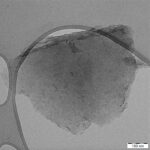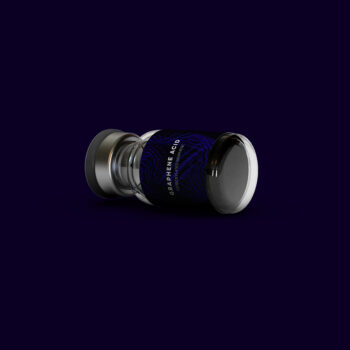Graphene acid is a covalent graphene derivative bearing carboxyl groups on both sides of the graphene surface. It is well dispersible in water, making stable colloidal dispersions at low and high concentrations. Graphene acid behaves as a 2D carboxylic acid with pKa of 5.2, precipitating at pH below 5.2. The nanomaterial is conductive and well biocompatible.
Quick facts
- Form …………. Water Dispersion of Few Layered Nanoflakes
- Lateral size …………. ~500 nm
- Purity …………. Approx. atomic content in %: C 80, O 15, N 4, F 1, Fe <20 ug/g; Cu <10 ug/g; Ni <10 ug/g
- pKa …………. 5.2
- Zeta-Potential …………. -32 ± 5 mV (pH = 5.5)
- Temperature stability …………. Up to 240 °C (inert atmosphere)
- Sheet resistance …………. 6 800 Ω.sq-1
- Dispersibility …………. water and polar solvents
Key Features
• Water dispersibility
• Conductivity
• Graphene surface decorated with -COOH groups
• High biocompatibility


Applications
- Conductive support for enzyme (electro)catalysis (ACS Appl. Mater. Interfaces, 12, 250-259, 2020)
- Carbocatalysis (metal free catalysis) (Chem. Sci., 10, 9438-9445, 2019)
- Arene CH insertion (Carbon, 143, 318-328, 2019)
- Electrochemical sensing (ChemElectroChem, 6, 229-234, 2019)
- Hydrogen peroxide electrochemical sensing (ACS Omega, 4, 19944-19952, 2019)
- Metal ions sorption (ACS Nano, 15, 3349–3358, 2021)
- Gas sensing (J. Mater. Chem. A, 9, 17434-17441, 2021)
- Genosensing (Biosens. Bioelectron., 195, 113628, 2022)
- Lithium-ion batteries (Adv. Energy Mat., 12, 2103010, 2022)

Package available
- Dispersion – 1 ml, 5 ml, 10 ml, 50 ml







